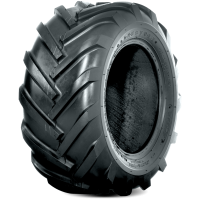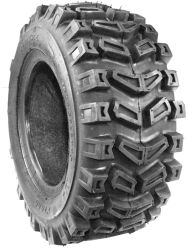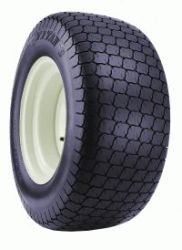Lawn Mower
-
 Availability: Out of Stock$77.89More Info...More InformationAdditional Info-Bearing-Bolt Pattern-Box Quantity-BrandDEESTONECenter Bore in/mm-ConstructionBIASCountry of OriginTHAILANDDiameter23Finish-Hub Length-Industry CodeR1/I3Load Index100Load/Speed Index100A3Machine Fitment/Application-Max Load Capacity (Lbs)1760Max PSI32Mounted Diameter (Inch)22.8Pattern/PositionR1/I3Ply/Load Index/Star Rating6Ratio10.50Rim Diameter12Rim Size12X8.5Rim Width8.5Rolling Circumference-Section Width10.4Size23-10.50-12Speed Rating/Speed (MPH)A3/10Static Loaded Radius (inch)10.6StyleD405 TRACTORSurface / Terrain-Tread Depth (32nds)18/32Tread Width-Tube Type / TubelessTUBELESSTypeR1/I3Valve-Weight (Lbs.)22.520000Wheel Back Spacing in/mm-Wheel Front Spacing in/mm-Wheel Offset in/mm-
Availability: Out of Stock$77.89More Info...More InformationAdditional Info-Bearing-Bolt Pattern-Box Quantity-BrandDEESTONECenter Bore in/mm-ConstructionBIASCountry of OriginTHAILANDDiameter23Finish-Hub Length-Industry CodeR1/I3Load Index100Load/Speed Index100A3Machine Fitment/Application-Max Load Capacity (Lbs)1760Max PSI32Mounted Diameter (Inch)22.8Pattern/PositionR1/I3Ply/Load Index/Star Rating6Ratio10.50Rim Diameter12Rim Size12X8.5Rim Width8.5Rolling Circumference-Section Width10.4Size23-10.50-12Speed Rating/Speed (MPH)A3/10Static Loaded Radius (inch)10.6StyleD405 TRACTORSurface / Terrain-Tread Depth (32nds)18/32Tread Width-Tube Type / TubelessTUBELESSTypeR1/I3Valve-Weight (Lbs.)22.520000Wheel Back Spacing in/mm-Wheel Front Spacing in/mm-Wheel Offset in/mm- -
 Availability: Out of Stock$64.54More Info...More InformationAdditional Info-Bearing-Bolt Pattern-Box Quantity-BrandCARLSTAR (FORMERLY CARLISLE)Center Bore in/mm-ConstructionBIASCountry of OriginUSADiameter16Finish-Hub Length-Industry Code-Load Index50Load/Speed Index50A3Machine Fitment/Application-Max Load Capacity (Lbs)410Max PSI14Mounted Diameter (Inch)16.4Pattern/PositionX TRACPly/Load Index/Star Rating2Ratio6.50Rim Diameter8Rim Size8X5.38Rim Width5.38Rolling Circumference-Section Width6Size16-6.50-8Speed Rating/Speed (MPH)A3/10Static Loaded Radius (inch)-StyleXTRACSurface / Terrain-Tread Depth (32nds)19/32Tread Width-Tube Type / TubelessTUBELESSTypeSNOWValve-Weight (Lbs.)7.000000Wheel Back Spacing in/mm-Wheel Front Spacing in/mm-Wheel Offset in/mm-
Availability: Out of Stock$64.54More Info...More InformationAdditional Info-Bearing-Bolt Pattern-Box Quantity-BrandCARLSTAR (FORMERLY CARLISLE)Center Bore in/mm-ConstructionBIASCountry of OriginUSADiameter16Finish-Hub Length-Industry Code-Load Index50Load/Speed Index50A3Machine Fitment/Application-Max Load Capacity (Lbs)410Max PSI14Mounted Diameter (Inch)16.4Pattern/PositionX TRACPly/Load Index/Star Rating2Ratio6.50Rim Diameter8Rim Size8X5.38Rim Width5.38Rolling Circumference-Section Width6Size16-6.50-8Speed Rating/Speed (MPH)A3/10Static Loaded Radius (inch)-StyleXTRACSurface / Terrain-Tread Depth (32nds)19/32Tread Width-Tube Type / TubelessTUBELESSTypeSNOWValve-Weight (Lbs.)7.000000Wheel Back Spacing in/mm-Wheel Front Spacing in/mm-Wheel Offset in/mm- -
 Availability: Out of Stock$320.37More Info...More InformationAdditional Info-Bearing-Bolt Pattern-Box Quantity-BrandTITANCenter Bore in/mm-ConstructionBIASCountry of OriginUSADiameter25Finish-Hub Length-Industry CodeR3Load Index78Load/Speed Index78BMachine Fitment/Application-Max Load Capacity (Lbs)935Max PSI30Mounted Diameter (Inch)25.7Pattern/Position-Ply/Load Index/Star Rating6Ratio10.50Rim Diameter15Rim Size15X8.25Rim Width8.25Rolling Circumference76Section Width10.4Size25-10.50LL-15Speed Rating/Speed (MPH)B/30Static Loaded Radius (inch)11.8StyleSOFT-TURF TLSurface / Terrain-Tread Depth (32nds)12/32Tread Width-Tube Type / TubelessTUBELESSTypeR3Valve-Weight (Lbs.)33.000000Wheel Back Spacing in/mm-Wheel Front Spacing in/mm-Wheel Offset in/mm-
Availability: Out of Stock$320.37More Info...More InformationAdditional Info-Bearing-Bolt Pattern-Box Quantity-BrandTITANCenter Bore in/mm-ConstructionBIASCountry of OriginUSADiameter25Finish-Hub Length-Industry CodeR3Load Index78Load/Speed Index78BMachine Fitment/Application-Max Load Capacity (Lbs)935Max PSI30Mounted Diameter (Inch)25.7Pattern/Position-Ply/Load Index/Star Rating6Ratio10.50Rim Diameter15Rim Size15X8.25Rim Width8.25Rolling Circumference76Section Width10.4Size25-10.50LL-15Speed Rating/Speed (MPH)B/30Static Loaded Radius (inch)11.8StyleSOFT-TURF TLSurface / Terrain-Tread Depth (32nds)12/32Tread Width-Tube Type / TubelessTUBELESSTypeR3Valve-Weight (Lbs.)33.000000Wheel Back Spacing in/mm-Wheel Front Spacing in/mm-Wheel Offset in/mm-
Lawn and garden tires are designed specifically for equipment and vehicles that operate in residential, commercial, or public green spaces. These tires are built to handle the conditions of these environments, offering traction on grass without causing significant damage to the turf. Here are some types of machines that commonly use lawn and garden tires:
- Lawn Mowers: This includes both push mowers and riding mowers. Riding mowers, in particular, require specialized tires that can handle the weight of the machine while providing a smooth ride and not damaging the lawn.
- Garden Tractors: These are more robust than regular riding mowers and are often used for more than just cutting grass. They might be used for tilling, towing small trailers, or other garden tasks.
- Zero-Turn Mowers: These are specialized riding mowers designed for tight turns and efficient mowing of large areas.
- Tillers and Cultivators: These machines are used to break up and aerate the soil. They require tires that can provide traction in loose or tilled soil.
- Snow Blowers: While primarily used in snowy conditions, many snow blowers have lawn and garden tires to provide traction on slippery surfaces.
- Utility Carts: These small trailers are often towed by garden tractors or ATVs to transport tools, plants, soil, and other materials around a garden or yard.
- Wheelbarrows: Some heavy-duty wheelbarrows have pneumatic tires similar to those found on other lawn and garden equipment.
- Golf Carts: While not strictly for lawn and garden use, golf carts operate in similar turf conditions and often use tires that are gentle on grass.
- Specialty Equipment: This can include machines like aerators, dethatchers, or sprayers that are used for specific lawn care tasks.
When selecting lawn and garden tires, it's essential to consider the specific needs of the equipment and the conditions in which it will operate. For instance, a tire that's perfect for a riding mower might not be suitable for a garden tractor that's frequently used for tilling or towing. Always consult the equipment's manual or a tire specialist to ensure you're choosing the right tire for your machine and its tasks.
Lawn and garden vehicles utilize a range of specialized tires designed for their specific tasks and the terrains they operate on. Here are some commonly used words and terms associated with these tires:
- Turf Tires: These are the most common type of tire for lawn and garden vehicles. They are designed to provide traction without damaging grass. Their tread patterns are often smoother and broader than those of more aggressive tires.
- Knobby Tires: These tires have pronounced knobs on them, providing better traction in loose or muddy conditions. They might be used on garden tractors or other vehicles that need to navigate rougher terrains.
- Ribbed Tires: These tires have a series of straight ribs running around the circumference. They're often used on the front wheels of some garden tractors and other equipment for smooth steering.
- Lug Tires: These have deep, pronounced treads for maximum traction, especially in muddy or soft ground conditions. They're often used on heavier garden tractors or equipment that needs to navigate challenging terrains.
- Pneumatic Tires: These are air-filled tires, similar to what you'd find on most vehicles. They provide a cushioned ride and are common on many lawn and garden machines.
- Semi-pneumatic Tires: These tires are not entirely filled with air but have pockets of air within them. They can't go flat like regular pneumatic tires.
- Solid Tires: These are made entirely of rubber or another solid material and cannot go flat. They're often used in situations where punctures are a concern.
- Bar Tread Tires: These have a bar-like pattern and are often used on tillers and other equipment that needs traction in dirt.
- Smooth Tires: These have minimal tread and are used in situations where minimal ground disturbance is desired.
- Radial vs. Bias: Radial tires have layers (plies) that run perpendicularly to the direction of travel, providing a smoother ride and longer tread life. Bias tires have plies that run at angles to the direction of travel. Lawn and garden equipment can use either type, but the choice often depends on the specific application and user preference.
When selecting tires for lawn and garden vehicles, it's essential to consider the specific needs of the equipment, the terrain it will operate on, and the tasks it will perform. Proper tire selection can enhance performance, reduce damage to lawns, and extend the lifespan of the equipment.
Lawn and garden tires are designed to operate on a variety of terrains commonly found in residential, commercial, and public green spaces. Here are some common terrain types that these tires might encounter:
- Turf/Grass: This is the most common terrain for lawn and garden vehicles. The tires are designed to provide adequate traction without causing significant damage to the grass.
- Loose Soil: This can be found in gardens, flower beds, or areas being prepared for planting. Tires operating on this terrain need to provide traction without getting easily stuck.
- Mud: After rains or watering, certain areas can become muddy. Tires for such conditions need deeper treads to prevent the vehicle from getting bogged down.
- Hard-packed Soil: This is commonly found on pathways or in areas with heavy foot traffic. Tires operating here need durability and stability.
- Gravel or Crushed Stone: Some pathways or driveways in garden areas might be made of gravel. Tires need to be robust and puncture-resistant for such terrains.
- Sand: Areas like sand beds or certain landscaping designs might have sandy terrains. Tires need to provide traction without digging in too deeply.
- Mulch or Wood Chips: These are often used in garden beds or around trees. Tires need to navigate this soft and uneven terrain without getting stuck.
- Paved or Concrete Surfaces: While not a natural garden terrain, many lawn and garden vehicles might need to cross driveways, sidewalks, or patios.
- Hilly or Sloped Ground: Some gardens or lawns are on inclines. Tires need to provide good traction to prevent sliding or rolling.
- Wet or Dewy Grass: Grass can become slippery due to morning dew or post-watering. Tires need to have a tread design that can handle wet conditions without skidding.
- Leaf-covered Ground: In the fall, leaves can cover the ground, making it slippery. Tires need to navigate this without sliding.
- Snow or Ice: In colder climates, garden tractors or other vehicles might be used for snow removal. Tires for these conditions often require chains or special treads for traction.
